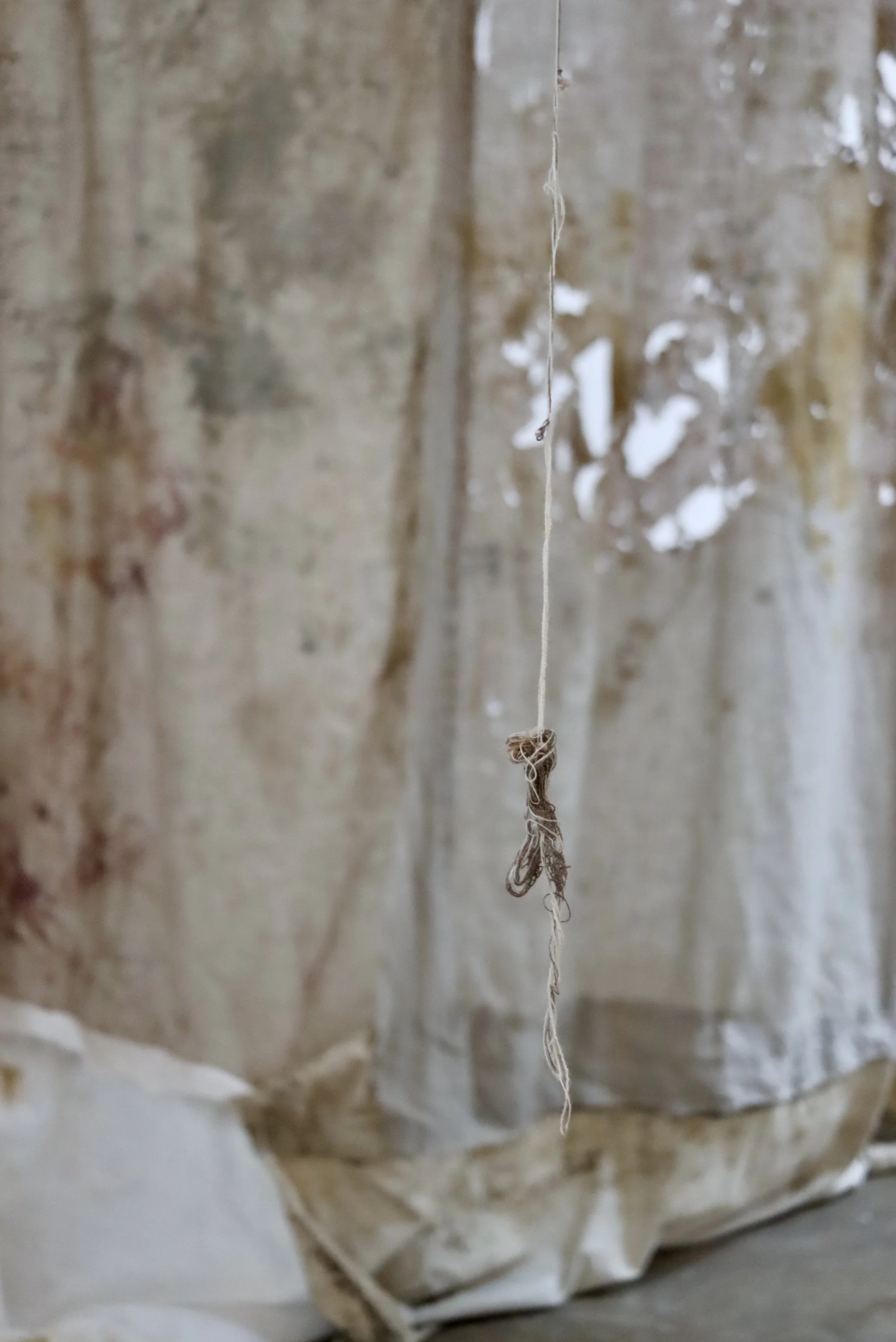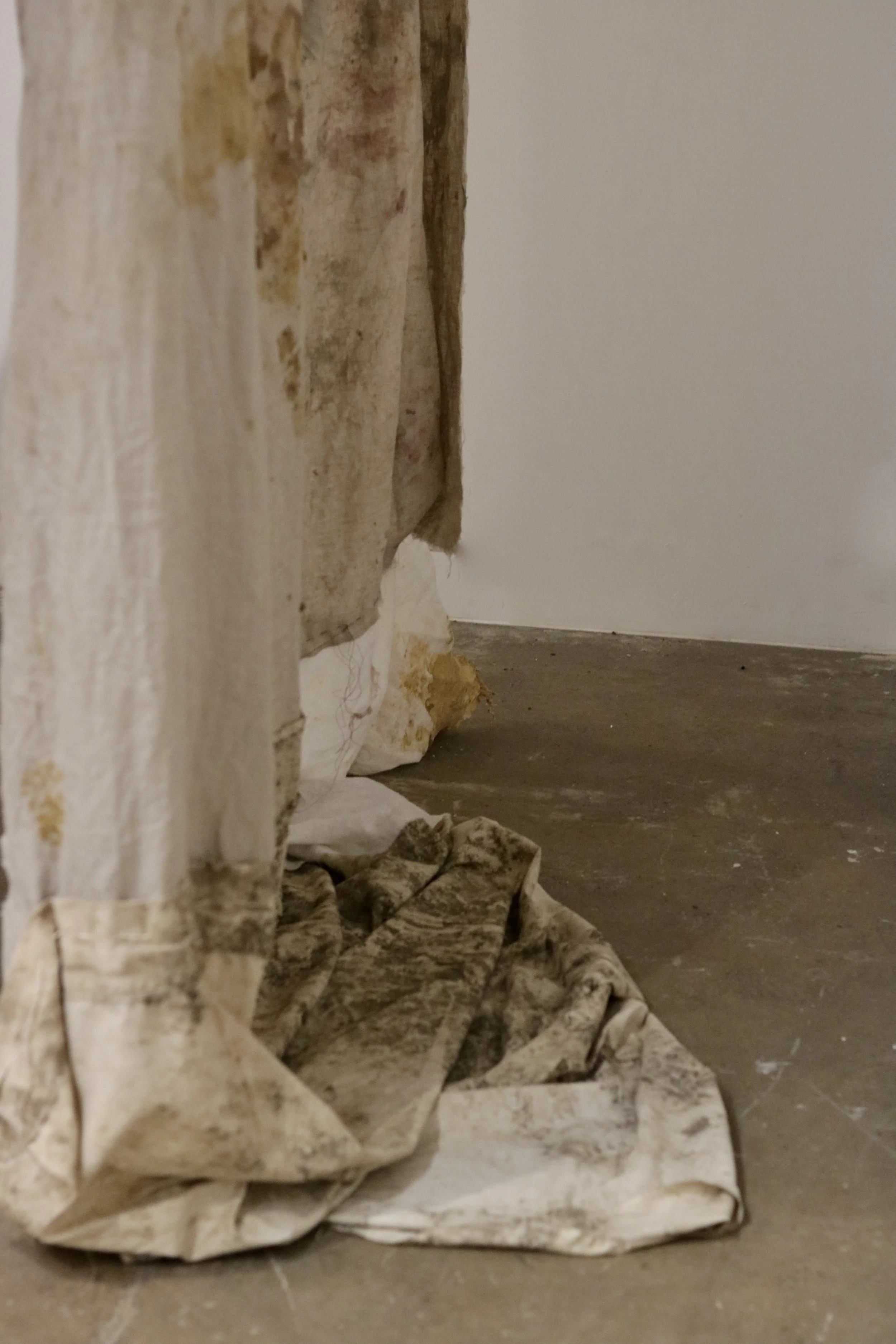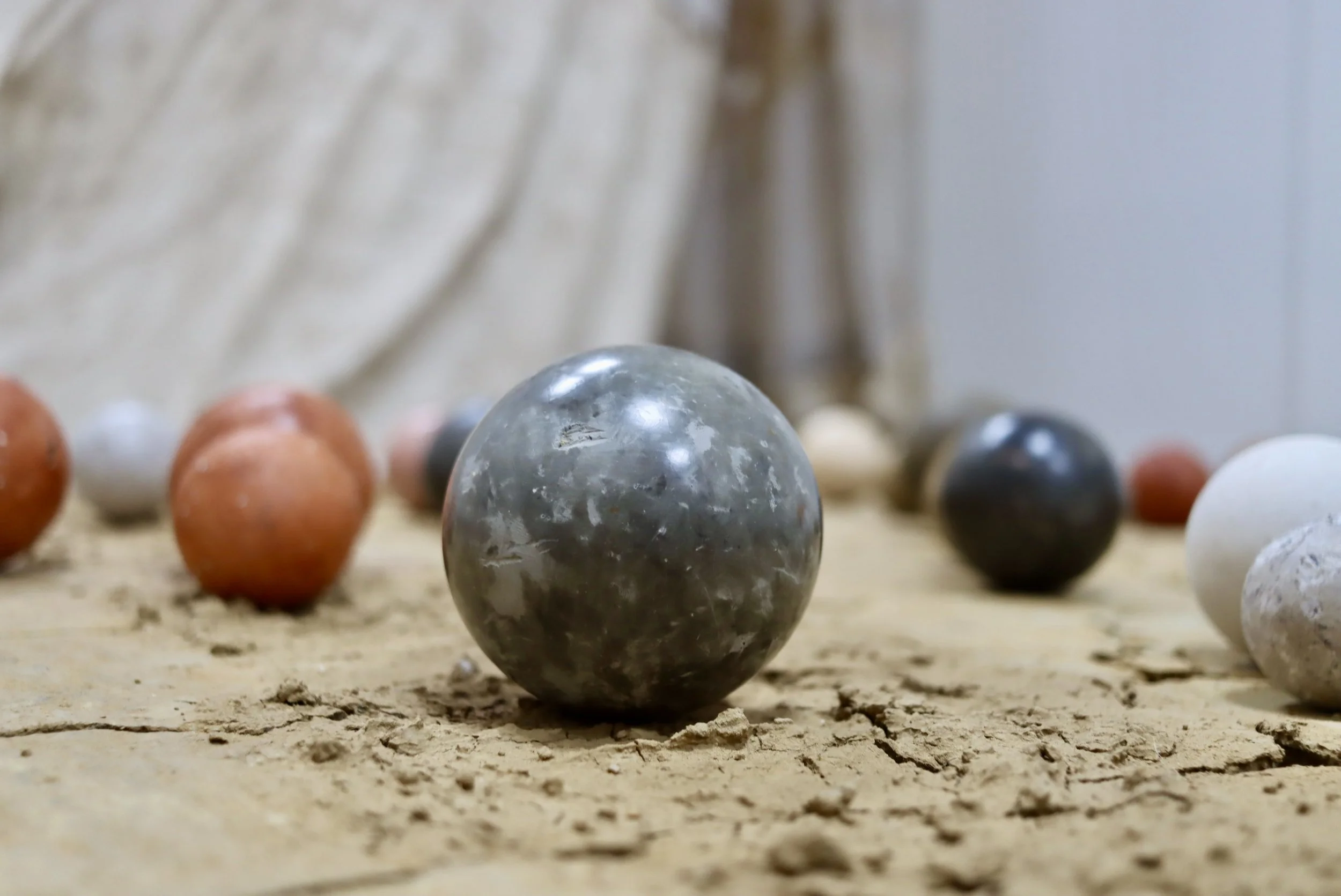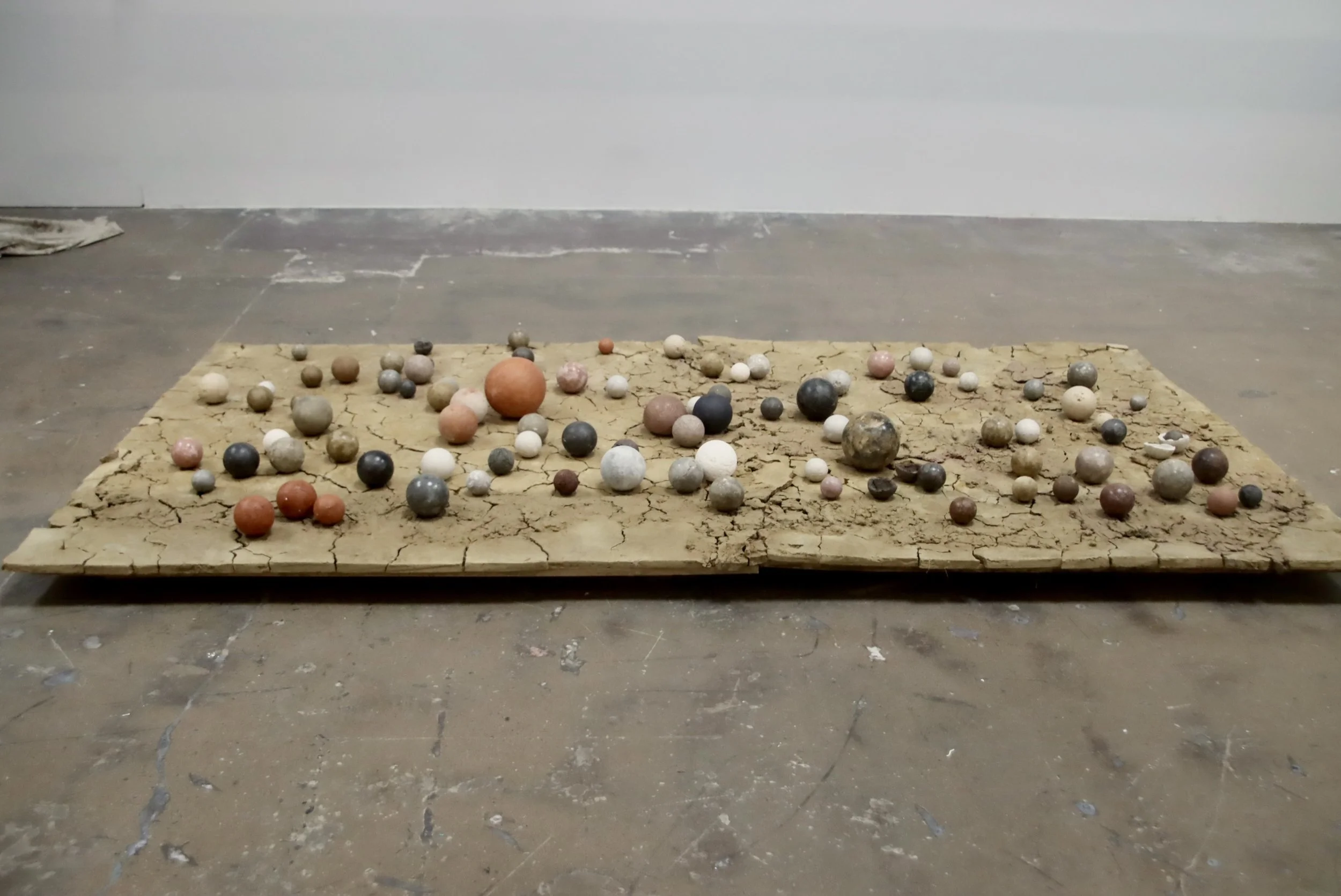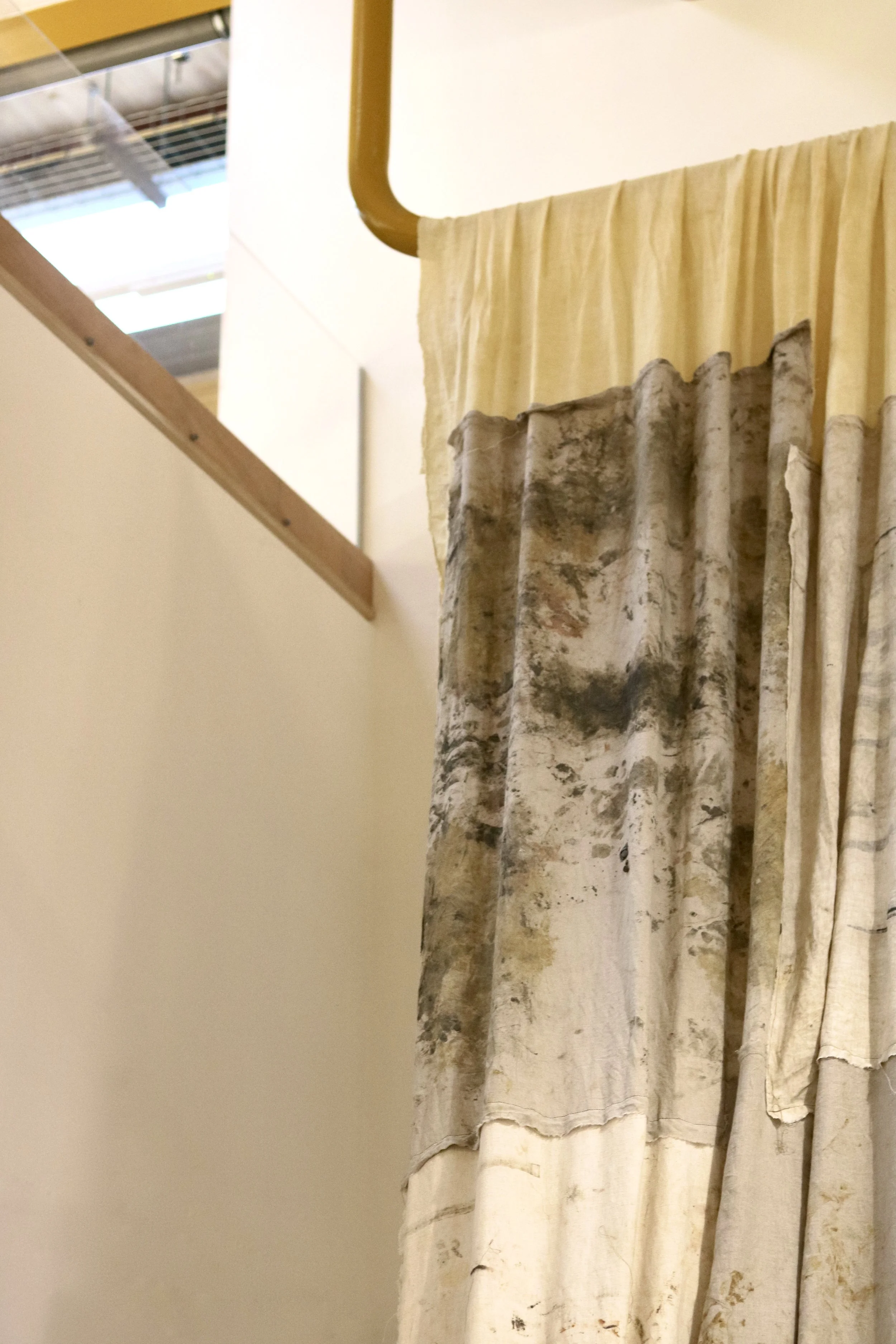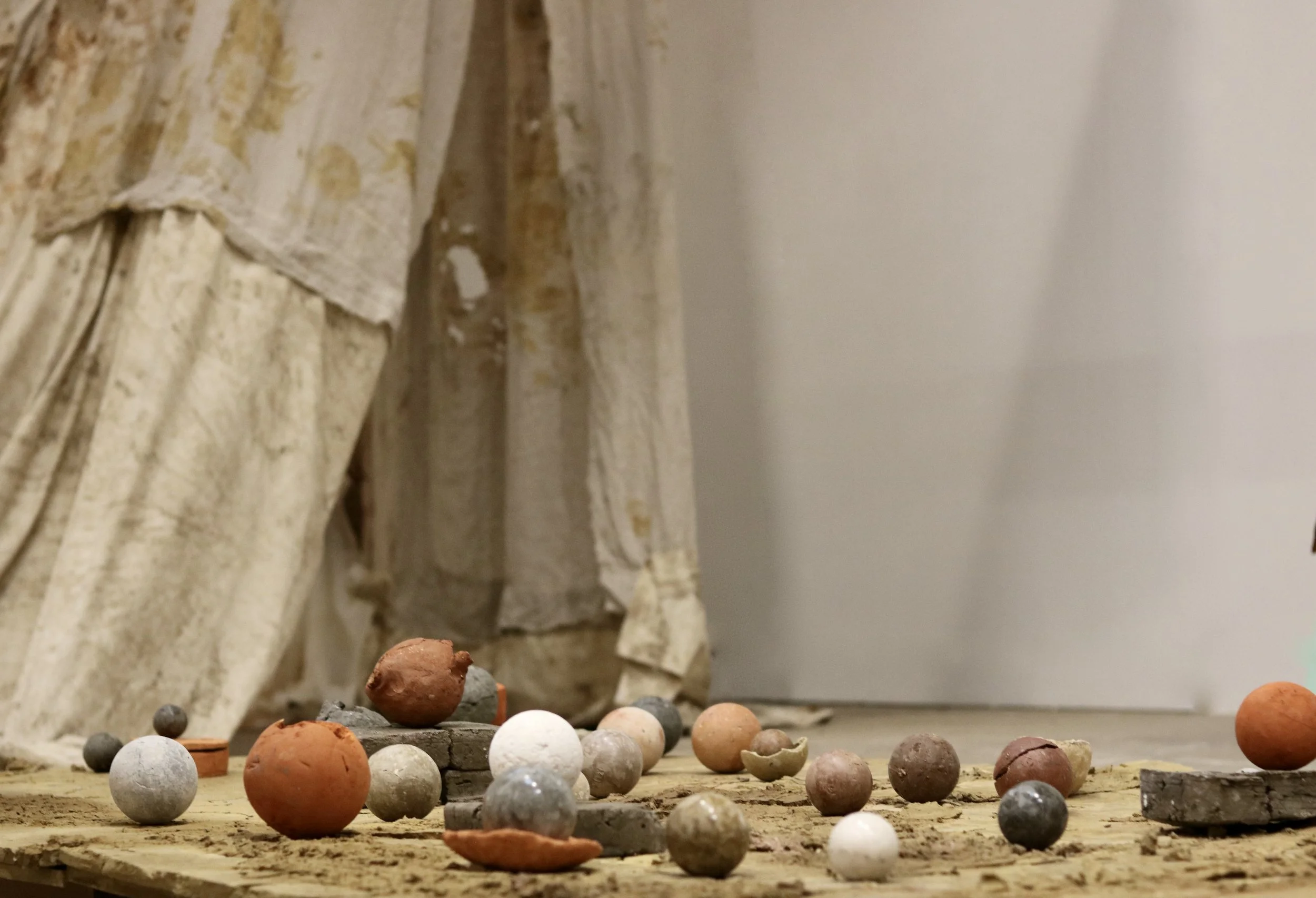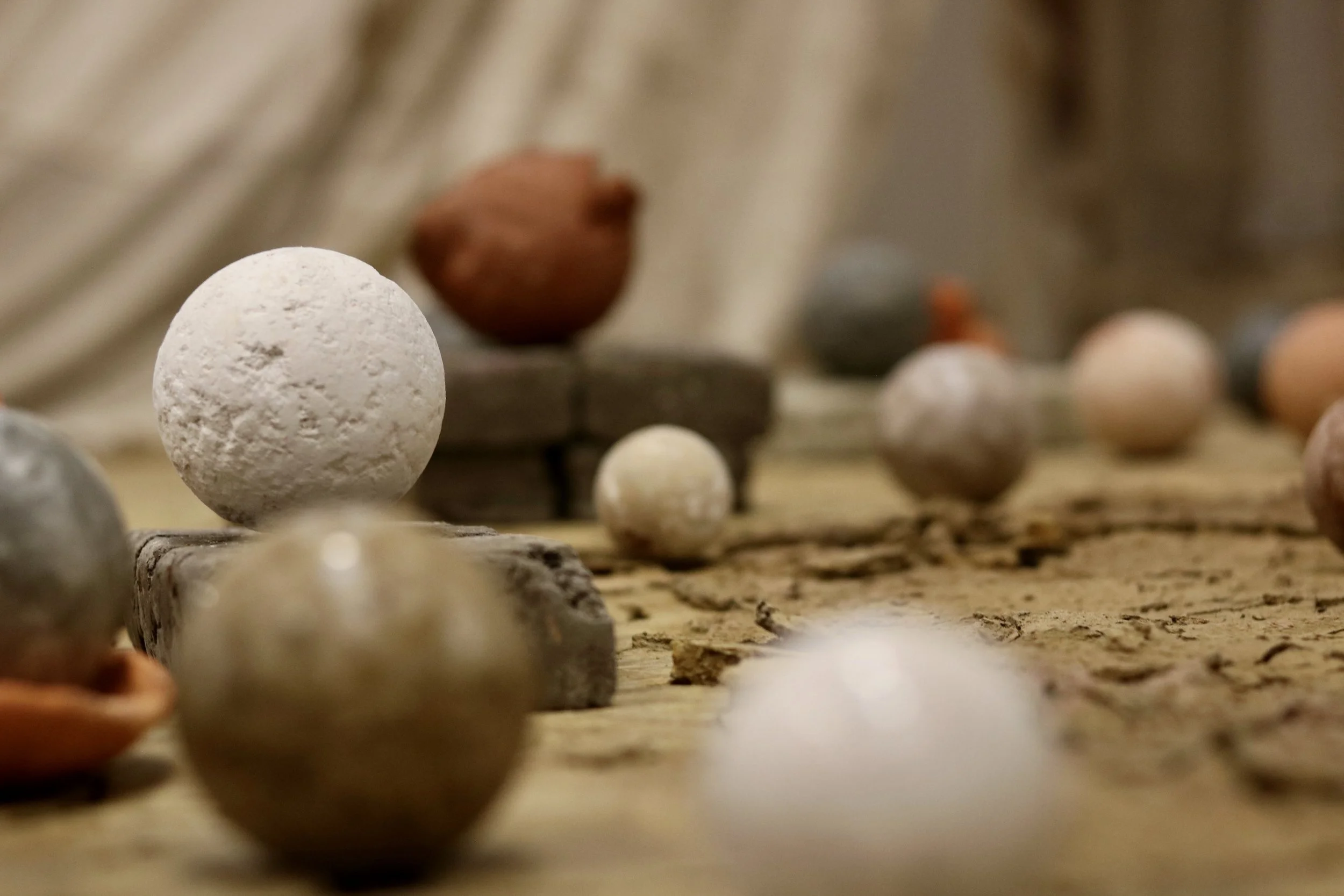The Human Clay was the culmination of my MFA research - a slow and layered exploration of material, memory, and place. Bringing together strands of practice developed over the course of a year, the work sits at the intersection of sculpture, performance, and installation. It is a living archive of the land, formed through processes of walking, collecting, making, and inviting others to interact.
The exhibition centres around two core elements: a low, ground-level platform holding a constellation of clay spheres, and a suspended textile piece that moves gently in space above it. Both are interactive and immersive, offering different forms of engagement. Visitors are encouraged to walk around, beneath, and through the installation, forming a sensory relationship with material - to touch, rearrange, observe, and reflect.
The clay spheres, Dorodongo Balls, were created through the projects Salt and Clay and Testing Ground. In Salt and Clay, I worked directly on the Dorset coast, forming spheres from hand-dug clay and returning them to the sea in acts of slow reciprocity. The project became a dialogue between clay and water, between permanence and erosion, between human gesture and natural cycles. In Testing Ground, I shifted the focus toward interaction and play - bringing the dorodango balls into the gallery, where they were shaped by performance and then left for the audience to encounter on their own terms. That work explored the politics of touch, of invitation, and the shifting roles of artist and viewer.
In The Human Clay, these threads come together. The clay balls are made from over 50 gathered clays and earths across the UK - each hand-formed, burnished, and finished using only my hands and a single glass jar. The labour of their making is slow, repetitive, and deeply embodied. Their surfaces carry the trace of the land and the rhythm of my body. When placed on the platform, they become both sculpture and offering - objects of presence, open to transformation through audience interaction. As visitors handle the spheres, they leave their own traces. Some are turned gently. Some are grouped or rolled. Others are left untouched, holding quiet space.
Bath Spa University MFA Degree Show, 2022.
THE HUMAN CLAY
Above the platform, a large hanging textile piece acts as a canopy - dyed, stained, and screen-printed using natural pigments and clay from the same sites. It records and responds to the movement of the land, absorbing the residue of place and process. The fabric is not simply background or documentation - it is part of the work’s material language. It hangs like a suspended landscape, folding and unfolding, shifting with air currents and the movement of bodies in the space.
The installation invites slowness. There is no fixed path through it, no clear direction. Like much of my practice, it centres tactility, care, and curiosity. The project reflects my interest in how materials carry knowledge - how they hold time, memory, and the marks of human and non-human interaction. Clay, earth, and fabric are not passive substances here; they are active collaborators in a reciprocal relationship.
Throughout my MFA, I have used embodied processes to explore these relationships. I limit my tools to the most basic - hands, cloth, jars - to allow for direct and intuitive conversation with materials. Whether it’s the stratified layers of clay gathered from ancient ground, or the ghost marks left behind in fabric, I am drawn to the quiet languages that emerge from working slowly and attentively.
The Human Clay is a document of that approach. It is a gathering of traces - not just the materials themselves, but the stories they hold. It reflects on the ethics of making, the intimacy of touch, and the shared responsibility we have toward the landscapes we walk and work with. By inviting the audience to participate - to rearrange, to observe, to wonder - the work becomes a shared terrain. A testing ground. A temporary ecology. A human clay.
The Human Clay was awarded the Wilfred Southall Sustainable Community Engagement Award.
The following text is a response written by Professor Steve Dutton.
The project was recognised for its strength and impact through the Wilfred Southall Sustainable Community Engagement Award, which celebrates projects that use diverse or unexpected collaborations to promote social cohesion, inclusion, or reconciliation. As part of the recognition Artistic Researcher and Academic Steve Dutton reflected on the work, emphasising its immersive potential and inclusive, non-hierarchical approach. Dutton remarked:
Edie’s statement in the catalogue states that “By making interactive, immersive work that is open to interpretation: moving “installations”, textiles and moving image she encourages a thoughtful and emotional audience response.”
The panel felt that potential for immersivity in Edie’s work was the key, both in terms of what was there to see, and also in terms of where the work might be heading Funnily enough Charlie Tweed asked a question yesterday about what might actually constitute a community. I think I made a flippant remark about it at the time, but, on reflection I think I was too quick to make a silly joke, as there really are questions to be asked about what community is? What constitutes it, especially in the environmental, post human, non-human context and I think the panel recognised this as a question sitting within Edie’s work. There is something ‘inclusive’ about it, something non-hierarchical, that it was (almost) literally made up of a series of oddballs, each one having its own history and presence in relation to the ones around them.
It was unclear how they came about but we imagined they were made not just by Edie’s hands but by others too, over conversations and shared stories. On a personal note, I took that further and imagined people sitting around the clay ‘floor’ digging and shaping those spheres, under the cover perhaps of the clay stained clothes like some form of yurt, surrounded by non-human critters. And here, Charlie’s question then about the make up of a community comes back to mind, where are the edges of the that community? in the people for sure, but also perhaps in the critters or even within the deep time which speaks within the very nature of the materiality of our worlds.


